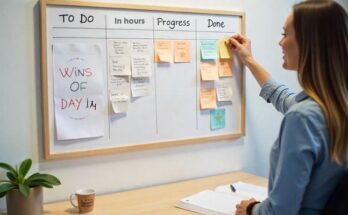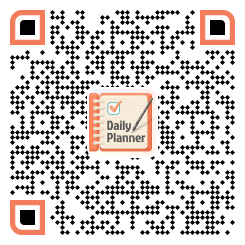Struggling to stay organized with ADHD? Weekly ADHD planner templates are designed to simplify task management and sharpen focus. This free printable ADHD planner template offers flexible, user-friendly layouts to reduce stress and boost productivity.
As an effective weekly schedule maker, it helps you prioritize and adapt with ease. Transform your week with a tailored ADHD planner template that empowers you to take control and thrive.
Managing daily tasks with ADHD can be tough. This ADHD Weekly Planner provides structure, helping track appointments, to-dos, and goals. If you need an effective weekly planner template, this design ensures clarity, organization, and reminders for a stress-free week.
This planner helps break tasks into manageable steps, making prioritization easier. Its structured yet flexible format boosts productivity and time management. Whether tracking meals, appointments, or tasks, this ADHD Weekly Planner keeps your week organized and stress-free.
How Can an ADHD Weekly Planner Improve Productivity?
An ADHD-friendly weekly planner is more than just a calendar—it’s tailored to tackle challenges in organization, time management, and task prioritization. Discover how to prioritize tasks effectively with ADHD and boost your productivity.
- Reducing Overwhelm with a Clear Visual Structure: A well-organized planner transforms a cluttered to-do list into a visually digestible format. This helps in clarifying priorities and reducing mental clutter by breaking down tasks into manageable segments.
- Breaking Tasks into Manageable Steps: Instead of overwhelming users with a long list of tasks, an ADHD planner can simplify the process by streamlining complex tasks into focused, bite-sized segments.
- Helping with Time Blindness: Time management is often a challenge for people with ADHD. A dedicated planner offers clear visual timelines and structured layouts that break the day into manageable segments, ensuring that every moment is allocated purposefully.
- Encouraging Task Completion with Checklists: Completion checklists provide a sense of accomplishment and are essential for reinforcing positive habits. They offer a clear, visual representation of progress that not only celebrates completed tasks but also motivates the consistency needed for long-term success.
- Additional Features to Enhance Productivity: Modern ADHD planners often include extra features designed to further assist with organization. They also offer customizable sections and interactive tools that adapt to individual needs, making it easier to manage evolving priorities and maintain long-term productivity.
By combining these features, an ADHD weekly planner not only organizes your schedule but also builds a framework for success, making daily productivity more achievable and less overwhelming.
What Are the Key Features of an ADHD Weekly Planner Template?
A well-designed ADHD planner should include sections that cater to common organizational challenges. Our ADHD weekly planner template offers the following features:
Simple and Clutter-Free Layout
ADHD brains thrive with visual organization. A planner with too many sections can be overwhelming, so it’s best to keep things simple with clear headings and minimal distractions.
- Visual Organization: ADHD brains thrive with clear, concise layouts that reduce sensory overload.
- Minimal Distractions: Fewer sections and straightforward headings help maintain focus.
- Customizable Design: Easily adjust the layout to fit your unique organizational style.
Prioritization Section
Since it’s easy to get lost in a sea of tasks, an ADHD planner should have a “Top 3 Priorities” section for each day or week. This helps you focus on the most important tasks first.
- Top 3 Priorities: Identify the three most important tasks for each day or week to focus your energy.
- Flexible Adjustments: Easily rearrange priorities as new tasks emerge or circumstances change.
- Highlighting Techniques: Use bold text or color highlights to make critical tasks stand out.
Visual Cues (Color Coding & Icons)
Using colors, symbols, and stickers can make planning fun and easier to follow. For example:
- Color Coding System:
- 🔴 Red: Urgent tasks
- 🟢 Green: Completed tasks
- 📌 Blue/Other Colors: Upcoming deadlines or special reminders
- Icons & Stickers: Enhance engagement and offer quick visual recognition of task types.
- Quick Reference: Easily glance at the page and understand the status of your tasks.
Time Blocking & Scheduling Space
Instead of a long to-do list, time blocking helps structure your day into chunks using a methodical schedule planner template. This approach prevents task-hopping and improves focus.
- Structured Time Slots: Divide your day into specific blocks to ensure focused work sessions.
- Prevents Task-Hopping: Dedicated scheduling helps maintain concentration on one task at a time.
- Visual Timelines: Incorporate charts or timelines to better visualize your day’s flow and progress.
Task Breakdown Sections
Breaking complex tasks into smaller, achievable steps becomes much easier with a structured task planner template, helping you stay organized and focused from start to finish.
- Divide and Conquer: Break larger projects into smaller, manageable steps.
- For example:
✔ Research the topic
✔ Outline key points
✔ Write the first draft
- For example:
- Step-by-Step Guidance: Clearly defined sub-tasks help reduce being overwhelmed.
- Actionable Items: Each step is actionable, making large tasks feel more achievable.
To-Do List with Checkboxes
A structured to-do list with checkboxes helps in tracking progress, and using a to-do list planner template makes it even easier to stay on top of your tasks. Physically checking off completed items can be highly satisfying and motivating.
- Interactive Checklists: Mark off completed tasks to visualize your progress.
- Motivational Impact: The satisfaction of checking off items can boost productivity and morale.
- Organized Overview: Keep track of all tasks in one central place for easy daily review.
Meal Plan Section
Meal planning reduces last-minute decision-making and promotes healthier eating habits. Using a meal planner template can simplify the process, making it easier to pre-plan meals and save time during busy weeks.
- Pre-planned Meals: Organize your meals in advance to eliminate last-minute decision-making.
- Healthy Habits: Encourage balanced eating by setting meal schedules alongside daily tasks.
- Time Efficiency: Integrate meal planning with your weekly schedule to save time during busy periods.
Reflection & Reward System
A small space for reflection and self-rewards at the end of the week can boost motivation. A simple note like “What went well this week?” or “What can I improve?” helps with self-awareness.
- Self-Assessment: Allocate space for reflecting on what went well and areas for improvement.
- Motivational Boost: Use a reward system to celebrate completed tasks and weekly achievements.
- Continuous Improvement: Regular reflections help identify patterns and guide adjustments for future planning.
How Can You Use This ADHD Planner Template for Maximum Efficiency?
Having a planner is one thing, but using it effectively requires a strategic approach. Starting with structured, printable planner templates gives you a clear foundation to build consistent habits—here’s a step-by-step guide to getting the most out of your ADHD weekly planner.
Structuring Your Week
Mapping your week in advance helps prevent tasks from slipping through the cracks, ensuring a balanced workload. This proactive approach builds a strong foundation for tackling each day with confidence and clarity.
- List Key Commitments: Start by writing down all important deadlines, appointments, and non-negotiable tasks.
- Weekly Overview: Map out each day to see the bigger picture, ensuring you allocate time for both work and personal tasks.
- Identify Peak Energy Periods: Note the times of day when you’re most productive and schedule your most challenging tasks accordingly.
- Buffer Time: Reserve extra time between activities to accommodate unexpected events or delays.
- Flexible Layout: Use a mix of structured plans and free spaces to allow for adjustments throughout the week.
Choose a Format That Works for You
Planners come in printable, digital, and physical formats. If you love writing things down, go for a paper planner. If you prefer digital flexibility, try a tablet-friendly or app-based planner.
- Assess Your Preferences: Decide between printable, digital, or physical formats based on your comfort and lifestyle.
- Personalize Your Planner: If you enjoy handwriting, opt for a paper planner; if you prefer digital tools, select an app that syncs across your devices.
- Hybrid Approach: Consider using a combination of digital reminders with a paper planner for visual appeal and tactile satisfaction.
Use Color-Coding for Better Organization
Assign colors to different categories (e.g., work, personal, errands) to quickly identify tasks at a glance. This simple strategy boosts organization and minimizes decision fatigue, making it easier to transition between tasks.
- Categorize Tasks: Assign specific colors for different categories, such as work, personal, and errands.
- Visual Cues: Utilize icons, stickers, or even highlighter pens to quickly identify task types.
- Consistency: Maintain a consistent color scheme throughout your planner to build familiarity and ease of navigation.
Keep It Visible & Accessible
Place your planner in a spot where you’ll see it daily—on your desk, pinned to the fridge, or set as a digital wallpaper. Out of sight often means out of mind!
- Strategic Placement: Keep your planner in a spot you see daily—on your desk, pinned to the fridge, or as a digital wallpaper.
- Mobile Access: If using a digital planner, ensure it’s synced across your devices for access anytime, anywhere.
- Regular Check-ins: Make it a habit to glance at your planner several times a day to reinforce your schedule.
Start with Small, Realistic Goals
Avoid overwhelming yourself with an overloaded schedule. Set 3-5 key tasks per day and break bigger tasks into bite-sized steps.
- Daily Task Limit: Avoid overwhelming yourself by setting 3-5 key tasks per day.
- Break It Down: Divide larger tasks into smaller, manageable steps to make progress more attainable.
- Prioritize Wisely: Focus on one or two high-impact tasks each day and build on them gradually.
Using Reminders and Alarms for Task Transitions
Using Reminders and Alarms for Task Transitions helps keep your day on track. Set notifications to signal when it’s time to switch tasks, ensuring you maintain momentum and balance throughout your schedule.
- Set Notifications: Use alarms or app notifications to signal transitions between tasks.
- Visual Timers: Implement a visual timer to reinforce time limits and help prevent hyperfocus on one activity.
- Transition Rituals: Create simple routines or cues (like a brief stretch or a sip of water) to signal the end of a task and prepare for the next.
Reviewing and Adjusting Plans for Better Results
Reviewing and Adjusting Plans for Better Results ensures that you stay on track and learn from your experiences. Regular reflection helps pinpoint what’s working and where improvements are needed, allowing you to fine-tune your approach for continued success.
- End-of-Week Review: At the end of each week, reflect on what worked and what didn’t.
- Record Insights: Use a dedicated space in your planner to jot down lessons learned and ideas for improvement.
- Adapt and Evolve: Adjust your strategies based on your reflections, ensuring your planner continues to meet your evolving needs.
- Celebrate Progress: Recognize your accomplishments, no matter how small, to motivate continued success.
By following these steps and using your ADHD planner strategically, you can transform daily chaos into a manageable and productive routine.
Who Can Benefit from This ADHD Weekly Planner?
While designed with ADHD in mind, this planner offers a versatile structure that can enhance organization and productivity for a variety of users:
🎓 Students
Students often juggle multiple responsibilities, and this planner helps streamline study schedules and extracurricular commitments. A clear weekly structure can reduce exam stress and improve overall academic performance.
💼 Working Professionals
Working professionals benefit from a planner that cuts through the chaos of busy schedules, providing clarity on task priorities. This approach supports better time management and fosters a healthier work-life balance.
👨👩👧 Parents
Parents can use this planner to coordinate the many facets of family life. It offers a structured approach to managing both personal and household responsibilities seamlessly.
🧩 Anyone Who Struggles with Organization
Anyone facing challenges with disorganization will find that a structured planner provides a much-needed roadmap to daily efficiency. It transforms chaotic schedules into clear, actionable plans.
This ADHD Weekly Planner is a powerful tool for anyone seeking a structured, flexible approach to daily organization and long-term goal setting.
Conclusion
An ADHD-friendly weekly planner helps break tasks into manageable steps, prioritize effectively, and build productive habits. With visual cues, time-blocking, and reflection sections, it reduces overwhelm and enhances organization. Whether you’re a student, professional, or parent, the PlanWiz Planner App can boost your productivity and bring structure to your week, making daily tasks more manageable and stress-free.
FAQs
ADHD affects executive functions like time management and task prioritization, so specialized planners with clear, distraction-free designs and tailored features help address these challenges effectively.
ADHD planners use simple layouts, color-coding, time-blocking, and task breakdown sections to minimize sensory overload and support focus, unlike regular planners that may be more complex.
Benefits include reduced overwhelm, improved time management, better task prioritization, increased productivity, and a sense of accomplishment through structured planning and visual progress tracking.
ADHD planners use visual timelines, time-blocking, and reminders to break the day into manageable segments, helping users allocate time purposefully and stay aware of time passing.
Look for a clutter-free layout, prioritization sections, color-coding, time-blocking, task breakdown areas, to-do lists with checkboxes, and spaces for reflection or rewards.








